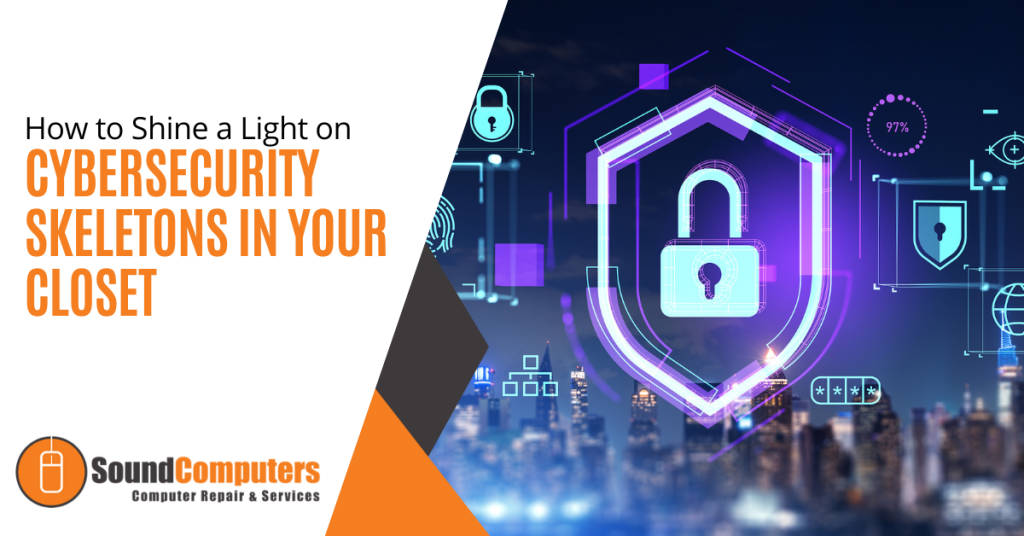
In an increasingly digitized world, cybersecurity has become a paramount concern for individuals and businesses alike. The threat landscape is always evolving with new vulnerabilities and attack vectors.
It is not just a matter of preventing breaches. You also need to identify potential cybersecurity weaknesses that might already exist within your systems. Just like cleaning out your closet periodically, it is essential to shine a light on the cybersecurity skeletons hiding within your digital infrastructure.
In this article, we will explore various methods and strategies to uncover these vulnerabilities, assess risks and fortify your defenses.
The Importance of Cybersecurity Assessment
Assessing the State of Your Digital Defense
Before you can address any potential cybersecurity skeletons, you need to have a clear picture of your current defense posture. Conducting a comprehensive assessment allows you to identify vulnerabilities, weak points and potential blind spots in your cybersecurity strategy. This assessment can involve both automated tools and manual audits.
- Vulnerability Scanning: Utilize specialized software to scan your systems, applications and networks for known vulnerabilities. These tools can help you identify outdated software, misconfigurations and other weak points that attackers could exploit.
- Penetration Testing: Hire ethical hackers to simulate real world cyberattacks on your systems. This approach helps you understand how attackers might attempt to breach your defenses and provides valuable insights into areas that require improvement.
Understanding the Threat Landscape
To uncover cybersecurity skeletons effectively, you must keep up with the latest threat landscape. Cyber threats are constantly evolving and new vulnerabilities emerge regularly. Stay informed about the latest attack vectors, malware strains and hacking techniques. Subscribing to cybersecurity news sources, participating in industry forums and attending conferences can help you stay up-to-date.
Unveiling Cybersecurity Skeletons
Identifying Hidden Vulnerabilities
Even with robust security measures in place, there might still be hidden vulnerabilities lurking in your systems. Here are some steps to uncover these cybersecurity skeletons:
- Regular Audits: Conduct regular audits of your systems, applications and networks. Look for unauthorized access points, outdated software and misconfigurations.
- User Permissions: Review user access permissions regularly. Disgruntled employees or compromised accounts could lead to unauthorized access.
- Third-party Risks: Assess the security practices of third-party vendors and partners who have access to your systems. Their vulnerabilities could potentially become your own.
Data Breach Drills and Incident Response Plans
Preparing for the worst-case scenario is an essential part of cybersecurity readiness. Establish robust incident response plans and conduct data breach drills to ensure your team knows how to react swiftly and effectively in case of a cybersecurity incident. These drills can reveal gaps in your response strategy and help you address them before a real incident occurs.
Risk Assessment and Mitigation
Quantifying and Prioritizing Risks
Not all cybersecurity vulnerabilities are created equal. Some pose a higher risk to your organization’s operations, sensitive data or reputation than others. It is crucial to quantify and prioritize risks to allocate resources effectively for mitigation efforts. Consider factors such as:
- Impact: How severely would a specific vulnerability impact your operations, finances or reputation?
- Likelihood: What is the probability that a certain vulnerability will be exploited?
- Ease of Exploitation: How easily can an attacker exploit the vulnerability?
Implementing Mitigation Measures
Once you have identified and prioritized your vulnerabilities, it is time to implement mitigation measures. This might involve a combination of technical solutions, policy changes and employee training. Some strategies include:
- Patch Management: Regularly update and patch your software to address known vulnerabilities.
- Multi-factor Authentication (MFA): Require MFA for accessing sensitive systems and data.
- Security Awareness Training: Educate employees about phishing, social engineering and other common attack vectors.
Continuous Improvement and Adaptation
Embracing a Cybersecurity Culture
Cybersecurity isn’t a one-time effort. It is an ongoing process that requires continuous improvement and adaptation. Fostering a cybersecurity culture within your organization is vital. This involves instilling security awareness in every employee and making security a fundamental aspect of your company’s values.
Monitoring and Response
Constant monitoring of your systems is crucial to quickly detect and respond to any unusual activities. Implement security information and event management (SIEM) systems to aggregate and analyze security-related data from various sources. This can help you identify potential breaches and respond proactively.
Protect Yourself Today
Unearthing cybersecurity skeletons is an essential undertaking in today’s digital landscape. Just as you wouldn’t want surprises hiding in your closet, you don’t want hidden vulnerabilities threatening your digital assets. Regular assessments, risk quantification, mitigation measures and a strong cybersecurity culture are all key to maintaining a robust defense against cyber threats.
At Sound Computers, we understand the significance of identifying and addressing cybersecurity vulnerabilities. Our team of experts is dedicated to helping you uncover your cybersecurity skeletons and fortify your digital defenses. To take the first step towards a more secure digital environment, contact us today. Your cybersecurity journey begins with us.
